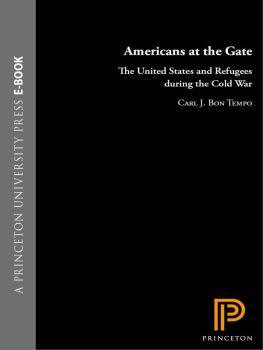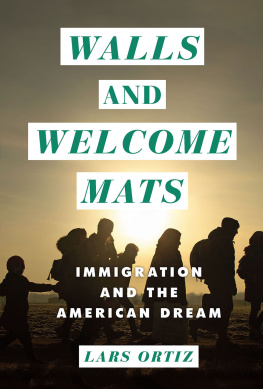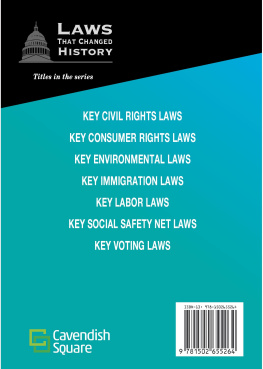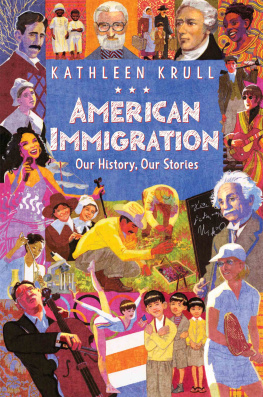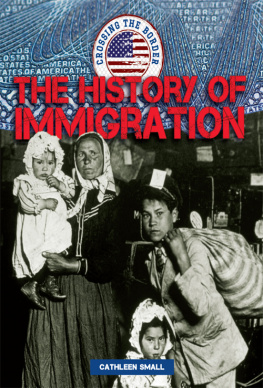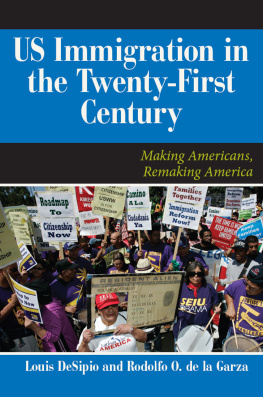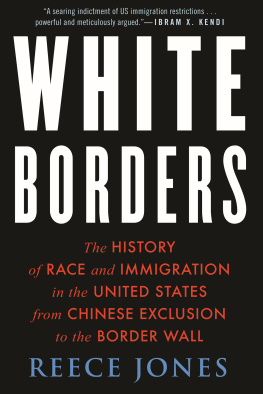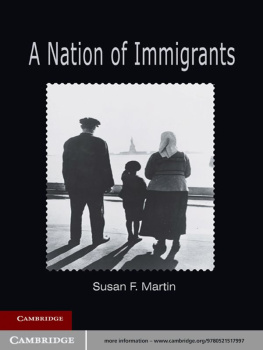IMMIGRATION
IMMIGRATION
An American History
CARL J. BON TEMPO
HASIA R. DINER
Yale
UNIVERSITY PRESS
New Haven and London
Published with assistance from the foundation established in memory of Philip Hamilton McMillan of the Class of 1894, Yale College. Copyright 2022 by Carl J. Bon Tempo and Hasia R. Diner.
All rights reserved.
This book may not be reproduced, in whole or in part, including illustrations, in any form (beyond that copying permitted by Sections 107 and 108 of the U.S. Copyright Law and except by reviewers for the public press), without written permission from the publishers.
Yale University Press books may be purchased in quantity for educational, business, or promotional use. For information, please e-mail (U.K. office).
Printed in the United States of America.
Library of Congress Control Number: 2021946779
ISBN 978-0-300-22686-7 (hardcover : alk. paper)
A catalogue record for this book is available from the British Library.
This paper meets the requirements of ANSI/NISO Z39.48-1992
(Permanence of Paper).
10 9 8 7 6 5 4 3 2 1
For our parents:
Carl P. Bon Tempo, Eileen S. Bon Tempo,
Esther Kite, and Moshe Schwartzman
My heart is filled with optimism
My dreams are so close to coming true
But the same cannot be said for others.
KAELA AALTO, Eyes of an Immigrant
Contents
Acknowledgments
KAELA AALTO, NOW AN undergraduate student at New York University, visited Ellis Island as a youngster in the fifth grade. Inspired by the lesson she received at that historic place, she turned to poetry to reflect on what she had seen. A few of her amazing words, preserved on an internet site, serve as the epigraph for this book. Her verse testifies to the fact that history does matter and that right now, in these tumultuous times, the history of immigration in particular has much to say to the American public. Our thanks to Ms. Aalto for permitting us to use her poetry to open this book.
Yale University Press must have agreed with that assessment, and we owe it a great thanks for having asked us to prepare a book on this always fascinating and profound aspect of American life. Sarah Miller at the Press first helped us conceive of the project. Adina Popescu Berk, our extraordinary editor, provided wise and patient counsel as we wrote and revisedand during a global pandemic at that! The rest of the Yale Press team, especially Ash Lago, have been so helpful as we worked through the production of the book.
A special note of thanks to the wonderful Hannah Zaves-Greene, a talented historian in her own right, who helped us find the images and make the charts in this book. Thanks as well to the Goldstein-Goren Center for American Jewish History for providing funding for parts of the research and writing. Thank you also to the History Department at SUNY Albany for funding to cover part of the indexing and proofreading of the book.
This book is built on the work of so many gifted scholars of immigration and the United States. We owe special thanks to the three anonymous readers who commented on the manuscript, helping us sharpen our arguments and analysis and saving us from many silly errors. Many others took time from their own work and lives to read parts, or all, of the manuscript or to answer questions. Thanks also to Kristin Celello, Sarah Coleman, Rebecca Erbelding, Nicole Eustace, Susan Ferber, Libby Garland, Adam Goodman, Ryan Irwin, Maddalena Marinari, Edward Murphy, Christopher Nehls, Jason Scott Smith, Aaron Sheehan-Dean, Barry Trachtenberg, Philip Wolgin, and Hannah Zaves-Greene.
Co-authoring a book can be a challenge. We are happy to report that it was a thoroughly enjoyable experience. It was a joy to share the project with each other. We challenged and supported each other through the writing and the revisions and came out to the other side as colleagues and friends. Co-authors cannot ask for much more than that.
A final thanks to our families. Kristin Celello and Teo Bon Tempo have been equal parts supportive and enthusiastic as Carl worked on the book. Steven Diner, as always, pitched in, asked great questions, read and edited the full manuscript, and shared parts of it with his undergraduate students at Rutgers UniversityNewark, giving them a chance to see and comment on an unpublished, and indeed unrevised, manuscript.
INTRODUCTION
Immigration: An American History
A YOUNG MAN WITH FEW skills, fewer resources, and no real prospects at home, John W. Nordstrom left his hardscrabble farm in Alvik Neder Lulea in northern Sweden in 1887. He headed to the United States. After some early struggles, he and a friend from back home decided to take laborers jobs in an iron mine in Stambaugh, Michigan. We knew we could get jobs there, he recalled. They always needed men, he remembered, and greenhorns like us were the only ones the mine operators could get, as no American would work there. Nordstrom eventually found his way to Seattle, Washington, where he opened a successful shoe store. He and his heirs turned that enterprise into a high-end department store, Nordstrom, a staple of large shopping malls in the latter part of the twentieth century.
Achut Deng, at first glance, shared little with John Nordstrom. Born in Southern Sudan in the 1980s and orphaned at age six during a civil war, she fled to refugee camps in Kenya and then Ethiopia. In 2000 a U.S. government program for Sudanese orphan refugees brought her to America. She went to college and ended up in Sioux Falls, South Dakota, working at a massive Smithfield pork processing plant. She started on the processing line, using a knife to cut fat from the hanging carcasses, and advanced to shift manager, a less physically taxing and more lucrative position. Eventually earning over eighteen dollars an hour, plus overtime, she gave her three boys
Nordstrom and Deng, two different people from different parts of the globe at different times and facing different challenges, both came to the United States to craft better futures for themselves. For them, and the tens of millions of others whose stories unfold in these pages, the United States represented a new start. Many came with dreams of economic security, hoping to match their industriousness to economic opportunities in the United States. Others came to escape religious or political persecution and aimed to enjoy privileges that the United States offered. For still others, the aftershocks of natural disasters played decisive roles in pushing them outward. Finally, many newcomers came to reunite with family members who had preceded them to the United States.
The chance that Nordstrom or Deng or any of the others could in fact accomplish their migration goals depended on their ability to navigate multiple, intersecting dynamics both in the places they sought to leave and in the place they hoped to enter, the United States. Governments, motivated by a mix of popular cultural and social attitudes, economic imperatives, and foreign policy concerns, could make it easier or harder for immigrants to leave or enter. Immigrants called on the latest in communications technologies to learn of opportunities in the United States and to arrange their travels and resettlement plans. They also depended on transportation networks at both ends of their journeys to ease their passage across borders and facilitate their resettlement.
Whether in the mid-nineteenth century, when John Nordstrom grabbed a shovel in Michigan, or the early twenty-first, when Achut Deng picked up her meat cleaver in the pork plant in South Dakota, and indeed in centuries earlier, immigrants stoked the material, physical, social, and cultural development of the United States. The vast growth of the American economy depended on the willingness of individuals to leave their homes elsewhere and exchange their physical strength and mental acuity for pay. The kinds of work they performed changed, but the recognition that without them the work could not get done persisted. Away from their jobs, in their communities every day, those same immigrants brought much to Americas social fabric, both reinforcing and reinventing it.


